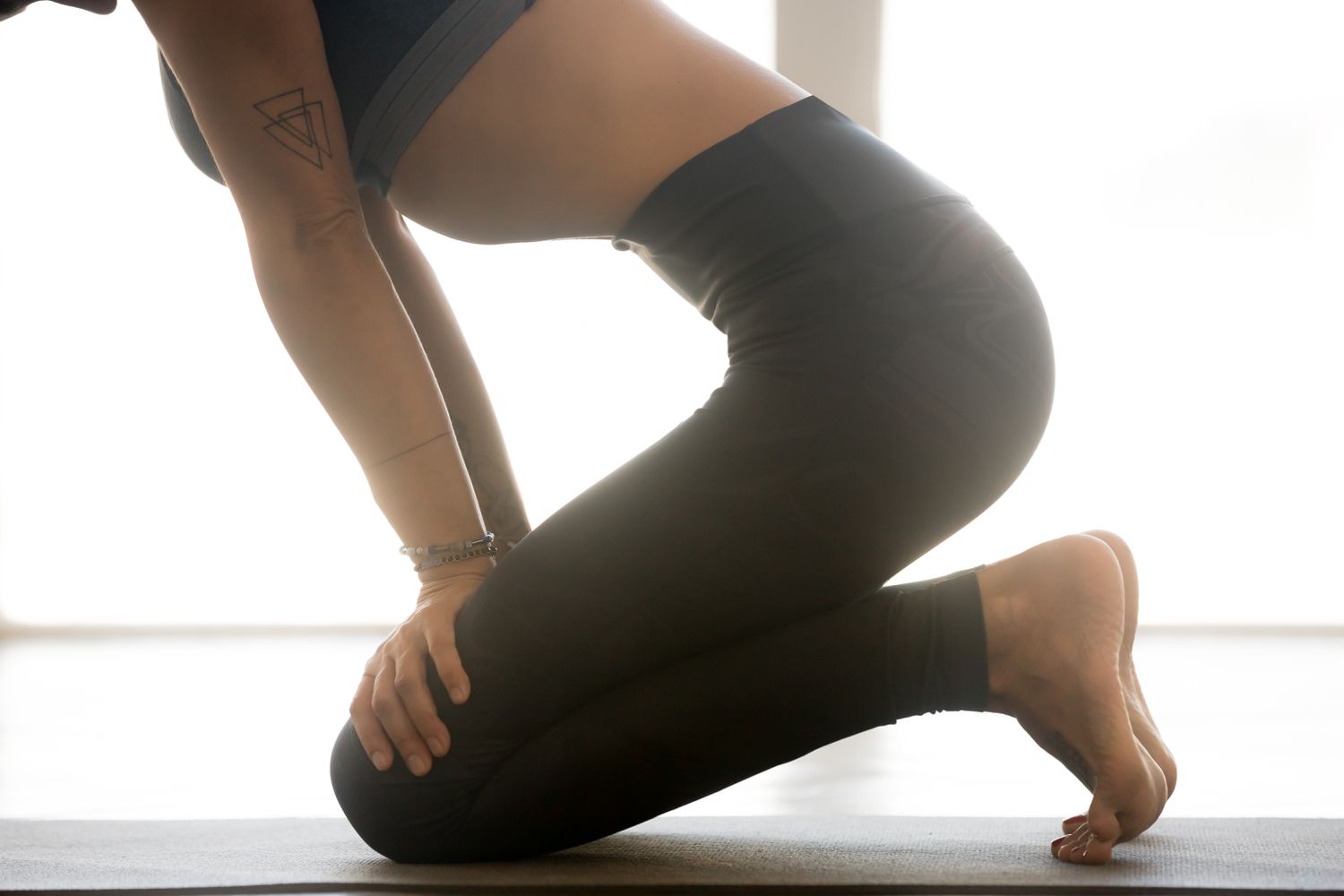What Is Belly Breathing and Why Is It Important for Exercise?
Say it with us: deep breaths.
By Mallory Creveling August 23, 2019

FIZKES/GETTY IMAGES
Take a deep breath. Do you feel your chest rise and fall or does more movement come from your stomach?
The answer should be the latter—and not only when you're focusing on deep breathing during yoga or meditation. You should also practice belly breathing during exercise. News to you? Here's what you need to know about making your inhales and exhales come from your gut.
What Is Belly Breathing?
Yes, it literally means breathing deeply into your stomach. It's also known as diaphragmatic breathing because it allows the diaphragm—the muscle that runs horizontally across the belly, kind of looks like a parachute, and is the primary muscle used in respiration—to expand and contract.
While belly breathing is our body's natural way to inhale and exhale, it's more common for adults to breath ineffectively, AKA through the chest, says Judi Bar, a 500-hour certified yoga instructor and yoga program manager at the Cleveland Clinic. Many people tend to resort to chest breathing when they're stressed because the tension makes you tighten your belly, explains Bar. This ultimately makes it harder to breathe efficiently. "It becomes a habit and because it's a more shallow breath, it actually feeds the sympathetic response—the fight or flight response—making you more stressed," she says. Thus, you get a circle of anxious reactions just from chest breathing. (Related: 3 Breathing Exercises for Dealing with Stress)
How to Belly Breathe Properly
In order to try belly breathing, "you first need to understand how to relax enough so there's space in the belly for the diaphragm and your breath to move," says Bar. "When you're tense and hold the belly in, you're not allowing the breath to move."
For proof, try this little test from Bar: Pull your belly in toward your spine and try to take deep breathes. Notice how hard it is? Now relax your midsection and see how much easier it is to fill your stomach with air. That's the looseness you want to feel when you're belly breathing—and a good indication of whether it's all coming from the chest.
The practice of belly breathing itself is pretty simple: Lie down on your back and place your hands on your belly, says Pete McCall, C.S.C.S., a personal trainer in San Diego and host of the All About Fitness podcast. Take a nice big inhale, and when you do, you should feel your belly lift and expand. As you exhale, your hands should lower. Think of your stomach like a balloon filling with air, and then slowly releasing.
If taking deep inhales and exhales feels tough or unnatural to you, Bar suggests practicing it once or twice a day for just two or three minutes. You can place your hands on your belly to make sure you're doing it right, or just watch to make sure your stomach moves up and down. Try doing it while you're tackling an everyday task, too, says Bar, like while you're taking a shower, washing dishes, or right before you go to sleep. (Because there's nothing like a little breathing exercise to calm the mind for bedtime!)
After you've been practicing for a while, start paying a little more attention to your breath during exercise, says Bar. Do you notice if your belly is moving? Does it change when you're squatting or running? Are you feeling energized by your breath? Take all these questions into consideration when you're doing your workout to check in with how you're breathing. (These running-specific breathing techniques can also help make miles feel easier.)
You can belly breathe during most forms of exercise, spin class to heavy lifting. In fact, you might have seen a technique used among the heavy lifting crowd called core bracing. "Core bracing can help stabilize the spine for heavy lifts; that is a form of belly breathing because of the controlled exhalation," says McCall. To do it correctly, practice the technique before actually lifting heavy loads: Take a big inhale, hold it, then deeply exhale. During a lift (like a squat, bench press, or deadlift), you'd inhale, hold it during the eccentric (or lowering) part of the movement, then exhale while pressing to the top. (Keep reading: Specific Breathing Techniques to Use During Every Kind of Exercise)
The Benefits of Belly Breathing During Exercise
Well, you're working an actual muscle—and one that helps to improve core stability, says McCall. "People don't realize the diaphragm is an important stabilizing muscle for the spine," he says. "When you breathe from the belly, you breathe from the diaphragm, which means you're strengthening a muscle that stabilizes the spine." When you do diaphragmatic breathing through exercises like squats, lat pulldowns, or any of the like, you should actually feel your spine steady through the movement. And that's the big payoff of belly breathing: It can help you learn to engage your core through each exercise.
Also, breathing from the belly allows more oxygen to move through the body, which means your muscles have more oxygen to continue crushing strength sets or conquering run times. "When you chest breathe, you're trying to fill the lunges from the top down," explains McCall. "Breathing from the diaphragm pulls air in, filling you from the bottom up and allowing more air in." This isn't only crucial to having more energy through your workouts, but throughout the day as well. Big belly breaths make you feel more awake, says McCall.
With more oxygen throughout your body comes the ability to work harder through your workout, too. "Belly breathing improves the body's ability to tolerate intense exercise because you're getting more oxygen to the muscles, which lowers your breathing rate and helps you expend less energy," says Bar. (Also try these other science-backed ways to push through workout fatigue.)
To top it off, practicing a few moments of mindful belly breathing—especially if you focus on counting through the inhales and exhales to make them even, as Bar suggests—can help with a little stress relief and some moments of peace (or, say, when you're recovering from a bout of burpees). "It really down-regulates your system in an effective way," says Bar, meaning it takes you away from a fight-or-flight state and into a calmer, more relaxed composure. Talk about a good way to recover—and a smart strategy for gaining mind and body benefits.
By Mallory Creveling




 Reply With Quote
Reply With Quote















